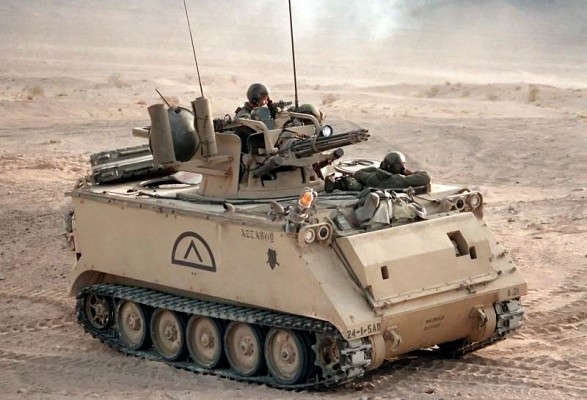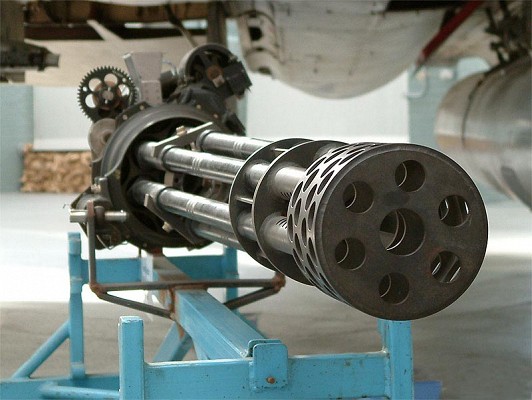20mm M61 Vulcan
GAU-4/A | M168
Overview

M61A2 Vulcan
Forward view of M61A2 Vulcan on display in 2017.
Source: MKFI -
© Public domain
United States - Lockheed Martin (1993 - ?)
United States - General Dynamics (? - present)
T171 (prototype designation)
JM61A1 (Japanese service/production)
Description
Introduction
The M61 Vulcan is an early Cold War era gatling-type autocannon of US origin. It was developed just after World War 2 for use on fighter aircraft. Whereas many European developments moved towards larger calibers, the US opted for a smaller caliber for increased chance to hit.
Design
The M61 is a rotary type autocannon chambered for 20x102mm ammunition. The barrel assembly has six barrels and the weapon is externally powered. The original M61 was fed by linked belts. Linkless feed systems are by far the most common, especially when used on fighter aircraft.
Firepower
The Vulcan is chambered for 20x102mm ammunition. Aircraft are usually equipped with a mix of API, HEI or SAPHEI ammunition. A DU penetrator is used in the Phalanx system against inbound anti-ship missiles. Cyclic rate of fire is 6.000 rpm. Often a burst controller is fitted on aircraft, with bursts ranging from a handful to 50 rounds.
Platforms
The M61 Vulcan has been used on most American fighter aircraft since the 1960’s. Additionally the Vulcan is used in gun pods. The Mk 15 Phalanx naval close-in weapon system is armed with the Vulcan. The Vulcan is also used in the air defense role on the M163 self-propelled and M167 towed systems.
Variants

M61
First variant of the M61 Vulcan to be introduced. Uses linked ammunition. This variant was soon supplemented and replaced by the M61A1. The links caused too much damage to aircraft when expended or too much stoppages in systems to capture them.

M61A1
Variant of the M61 for use with a linkless feed system. Often used in a double ended setup where empty cartridges are fed back into the feed system. First used in the F-104C in 1959. This quickly became the most widely used version of the M61 for aircraft use.

M61A2
Lightweight version of the M61A1 developed for use on the F-22 Raptor, but also used on other aircraft such as Super Hornet. This features thinner and lighter barrels, which also increase the spin up time of the barrel assembly. Cyclic rate of fire is increased to 6.600 rpm.

GAU-4 / M130
Self-powered variant of the M61. Gas is tapped from three of the six barrels to operate the weapon. A starter allows the first round to be chambered and starts rotation of the barrel assembly. The gas operated system adds 4.5 kg of weight, but dispenses of the external power requirement. This variant is used on the SUU-23 gun pod.

M168
Variant of the M61A1 with its linkless feed system for use as an anti-aircraft gun on the self-propelled M163 or towed M167. The cyclic rate of fire is halved to 3.000 rpm. Burst length is selectable and ranges between 10 and 100 rounds. Alternatively it fires in a continuous burst at 1.000 rpm.
Details
Systems armed with M61 Vulcan

M163 Vulcan
American self-propelled anti-aircraft gun. Armed with the M168 variant of the M61A1 Vulcan.

20mm Mk 15 Phalanx
American naval close-in weapon system. Last ditch defense against incoming anti-ship missiles on many American vessels.




